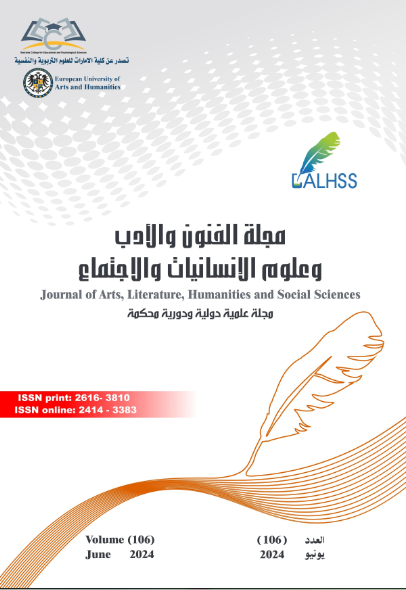Designing an Interactive Technology based on Artificial Intelligence to Develop the Stages of Production and Marketing of Some Traditional Costumes in the Kingdom of Saudi Arabia
Abstract
This study aimed to preserve the cultural heritage of women's traditional fashion in the Kingdom of Saudi Arabia by creating a comprehensive digital system that collects and classifies traditional costumes. The focus was on the Western region of Saudi Arabia, where a dataset of traditional clothing was prepared. Additionally, a dedicated website was designed to facilitate the marketing and ordering of traditional costumes. The research employed a combination of descriptive analytical and experimental methods. The study tools included an expert opinion poll to gather insights on the requirements for establishing an artificial intelligence-based classification system for women's traditional fashions, as well as a user attitude measurement regarding the website's marketing of Saudi Arabia's traditional costumes. Furthermore, questionnaires were used to gather specialists' opinions on the classification system and associated website for developing production and marketing stages, while users' opinions were sought regarding the artificial intelligence-based classification system and the website. The study yielded several key findings, including the feasibility of preserving the cultural heritage represented by traditional costumes from the western region of Saudi Arabia through the collection and classification in an artificial intelligence-based system. Moreover, the study demonstrated the potential to promote and sell traditional fashions using a website integrated with an artificial intelligence-based classification system.
References
2. Boardman, R., & Mccormick, H. (2021). Attention and behaviour on fashion retail websites: an eye-tracking study. Information Technology & People, 35(7), 2219–2240. https://doi.org/10.1108/itp-08-2020-0580
3. Chakraborty, S., Hoque, M. S., Jeem, N. R., Biswas, M. C., Bardhan, D., & Lobatón, E. (2021). Fashion Recommendation Systems, Models and Methods: a review. Informatics (Basel), 8(3), 49. https://doi.org/10.3390/informatics8030049
4. Chrimes, C., & Boardman, R. (2023). The Opportunities & Challenges of the Metaverse for Fashion Brands. In Springer texts in business and economics (pp. 389–410). https://doi.org/10.1007/978-3-031-33302-6_20
5. Dabbous, A., & Barakat, K. A. (2020). Bridging the online offline gap: Assessing the impact of brands’ social network content quality on brand awareness and purchase intention. Journal of Retailing and Consumer Services, 53, 101966. https://doi.org/10.1016/j.jretconser.2019.101966
6. Pantanella, F. (2022, July 18). How Fashion Designers find Inspiration. Beyond Talent Recruitment. https://beyondtalentrecruitment.com/blog/fashi on-designers
7. Rajabzadeh, M., & Kalantar, M. (2022). Enhance the resilience of distribution system against direct and indirect effects of extreme winds using battery energy storage systems. Sustainable Cities and Society, 76, 103486. https://doi.org/10.1016/j.scs.2021.103486
8. Sayekti, F., & Wijayanti, L. (2018). The influence of perception of Usefulness (POU) and Perceived ease of Use (PEU) on the perception of information system performance. In CRC Press eBooks (pp. 137–140). https://doi.org/10.1201/9781351241892-26
9. SDAIA, (n.d ) https://sdaia.gov.sa/ar/default.aspx



